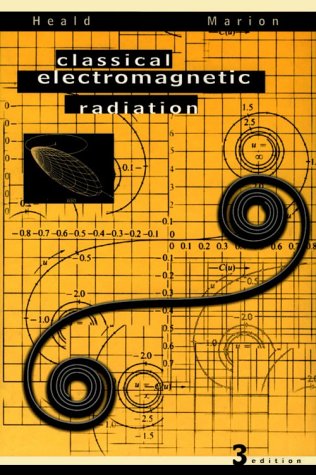Classical electromagnetic radiation pdf download
Par smith willard le samedi, octobre 1 2016, 22:46 - Lien permanent
Classical electromagnetic radiation by Heald M.A., Marion J.B.


Classical electromagnetic radiation pdf
Classical electromagnetic radiation Heald M.A., Marion J.B. ebook
Format: djvu
Publisher: Saunders
ISBN: 0030972779, 9780030972775
Page: 586
Large, coherent configurations of these particles behave as classical waves - electromagnetic waves or gravitational waves, respectively. Electromagnetic radiation (often abbreviated E-M radiation or EMR) is a form of energy exhibiting wave-like behavior as it travels through space. Derivation of the blackbody radiation spectrum without quantum assumptions. It can be divided into electrostatics, the study of interactions between charges at rest, and electrodynamics, the study of interactions between moving charges and radiation. Assume sources, restricted to a finite domain, which emit radiation. And we know radiation does experience gravitation , this would directly imply that it occupies 'space' or 'volume' . Language: English Released: 1995. Basic knowledge of vector calculus and Fourier analysis is assumed. The revision of this highly acclaimed text is designed for use in advanced physics courses--intermediate level juniors or first year graduates. Classical electromagnetic radiation · GO Classical electromagnetic radiation. Related work on a one-dimensional array of superconducting islands that can act as quantum bits (qubits) was considered by Rakhmanov, et al. In a subtle distinction, what we call the magnetic field can (classically) only be detected by its effect on a moving test charge, so one must use a second moving charge to characterize the "magnetic" force from a first moving charge. How Electromagnetic Induction vs. Similarly, frequency is a concept that only really applies to classical electromagnetic waves, so if you want to define frequency, you need to look at a beam of photons and take expectation values. Electromagnetic Radiation, Classical Physics, 17. Publisher: Saunders Page Count: 586. Author: Heald M.A., Marion J.B.. Since electromagnetic radiation is composed of changing electric and magnetic fields, does that mean that EMR (light) causes an electric and magnetic force on charged particles/objects? To answer your second question, you must distinguish between the classical idea of "electromagnetic waves" and the quantum mechanical idea of wave-particle photons. Another interesting classical electromagnetic effect is the phenomenon of magneto-magnetic waves.